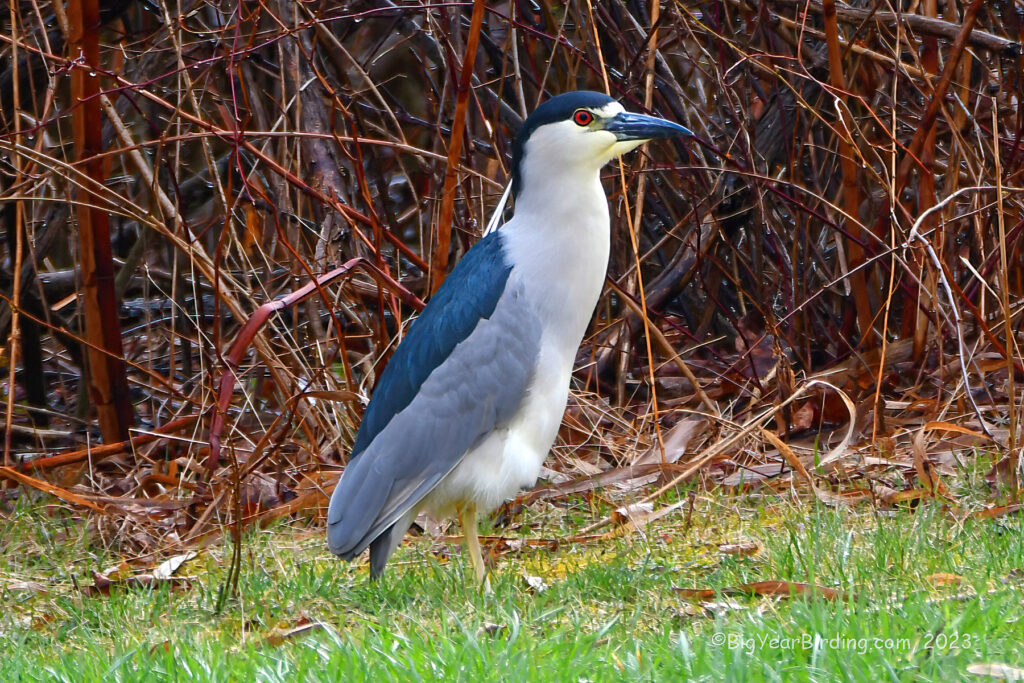
The Black-crowned Night-Heron (Nycticorax nycticorax) is a medium-sized wading bird that belongs to the heron family. It is widely distributed across North and South America, Europe, Africa, and Asia. Adult birds have a distinctive black crown and back with a gray underbelly, and they stand approximately 25 inches tall with a wingspan of 44 inches. They weigh between 1.3 and 2.6 pounds, with males being slightly larger than females.

One of the distinguishing field marks of the Black-crowned Night-Heron is its red eyes, which become brighter during breeding season. Their bills are relatively short, stout, and black, and they have yellow legs. They are generally crepuscular or nocturnal birds, which means they are active during twilight or nighttime. During the day, they are often found roosting in trees or perching on branches overhanging the water.
Black-crowned Night-Herons are partially migratory birds, with populations in the northern hemisphere migrating southwards during the winter. In North America, the breeding range stretches from southern Canada to Mexico, while wintering ranges include the southern United States, Central America, and the Caribbean. In Europe and Asia, they are resident year-round, with some populations migrating southwards during the winter.
Black-crowned Night-Herons are opportunistic feeders, and their diet is varied, including fish, crustaceans, insects, reptiles, and small mammals. They are also known to forage in a variety of habitats, including wetlands, marshes, ponds, and even urban areas such as parks and golf courses. Their foraging strategy involves standing or walking slowly along the edge of the water, striking at prey with a quick thrust of the bill.

In summary, the Black-crowned Night-Heron is a distinctive wading bird that can be found in a variety of habitats across North and South America, Europe, Africa, and Asia. They have a black crown and back, gray underbelly, and red eyes, and stand approximately 25 inches tall with a wingspan of 44 inches. They weigh between 1.3 and 2.6 pounds and are partially migratory birds, with populations in the northern hemisphere migrating southwards during the winter. Their diet is varied and opportunistic, and they are known to forage in a variety of habitats, including wetlands, marshes, and even urban areas.

